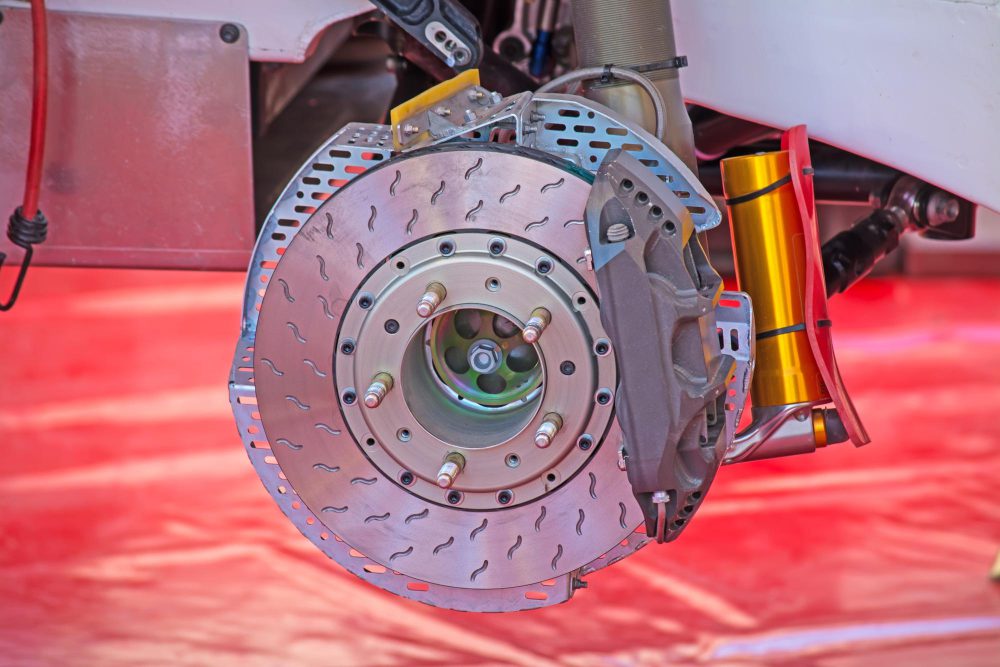Is it safe to drive with ABS and brake light on?
Seeing the ABS and brake light illuminated on your dashboard can be a cause for concern. These warning lights indicate that there may be an issue with your vehicle’s braking system, specifically with the Anti-lock Braking System (ABS). The ABS is an important safety feature in modern cars, designed to prevent the wheels from locking up during sudden braking or when driving on slippery surfaces.
So, is it safe to drive with these warning lights on? The short answer is no. When the ABS and brake lights are on, it typically means that there is a malfunction in the system, which can compromise the effectiveness of your brakes. Driving with these lights on can put you at an increased risk of accidents and may result in longer stopping distances.
The ABS and Brake System
To better understand why driving with the ABS and brake lights on is unsafe, let’s delve into how the ABS system works and its interaction with the overall brake system.
The Anti-lock Braking System is designed to prevent wheel lock-up by modulating the brake pressure to each wheel individually. This allows you to maintain control over your vehicle during emergency stops or when driving on slippery surfaces. When the ABS detects that a wheel is about to lock up, it rapidly pulses the brake pressure to that wheel, preventing it from skidding.
The ABS system relies on various components, including sensors, hydraulic valves, and the Electronic Control Unit (ECU). If any of these components fail or malfunction, it can trigger the ABS and brake warning lights on your dashboard.
The Risks of Driving with ABS and Brake Lights On
When the ABS and brake lights are on, it indicates that the ABS system is not functioning properly. This means that in the event of an emergency stop or driving on slippery surfaces, your wheels may lock up, leading to a loss of control. Additionally, the malfunctioning ABS system may cause other problems, such as:
- Increased stopping distances: Without the ABS functioning correctly, your vehicle’s stopping distances can be significantly longer.
- Potential brake system failure: A malfunctioning ABS system could affect other components of the brake system, potentially leading to complete brake failure.
- Uneven brake force distribution: The ABS helps distribute braking force evenly among the wheels. If it’s not working properly, some wheels may receive more brake force than others, resulting in uneven braking and a loss of stability.
It’s important to address the issue promptly when the ABS and brake lights are on. Ignoring the warning lights and continuing to drive can be a gamble with your safety and the safety of others on the road.
What to Do When ABS and Brake Lights Are On
If you notice that the ABS and brake lights are illuminated on your dashboard, it’s advisable to take the following steps:
- Check your brake fluid level: Low brake fluid levels can trigger the ABS and brake warning lights. Ensure that the brake fluid is at the appropriate level. If it’s low, have it checked for leaks and topped up by a qualified mechanic.
- Inspect brake pads and rotors: Worn-out brake pads or faulty rotors can also cause the ABS and brake lights to come on. Have a professional inspect and replace any worn-out components as needed.
- Visit a mechanic: If the warning lights persist after checking the brake fluid and inspecting the brake components, it’s essential to seek professional assistance. A mechanic will be able to diagnose and repair the underlying issue with your ABS system.
Remember, driving with the ABS and brake lights on is not safe. It’s crucial to address the problem promptly to ensure the proper functioning of your vehicle’s braking system and your safety on the road.
Can you drive with a bad brake control module?
The brake control module is an integral part of your vehicle’s braking system, responsible for controlling the anti-lock braking system (ABS) and communicating with other components such as the brake pedal position sensor and wheel speed sensors. When the ABS and brake light are on, it is an indication that there might be an issue with the brake control module.
The Function of the Brake Control Module
The brake control module plays a crucial role in ensuring the safe operation of your vehicle’s braking system. It helps prevent wheel lock-up during sudden braking or in slippery conditions by modulating brake pressure to individual wheels. This enhances steering control and allows the driver to maintain better control of the vehicle.
Driving with a Bad Brake Control Module
If your brake control module is malfunctioning, it can affect the performance of your ABS system. The ABS light and brake light on your dashboard will illuminate to warn you about the issue. Driving with a bad brake control module can compromise your ability to brake safely, especially in emergency situations or on wet or icy roads.
It is strongly recommended to have your vehicle inspected by a qualified mechanic as soon as possible if you notice the ABS and brake lights are on.
Consequences of Driving with a Bad Brake Control Module
Continuing to drive with a faulty brake control module may lead to various consequences:
- Increased stopping distance: A malfunctioning ABS can result in longer stopping distances, as the system may not be able to adequately modulate brake pressure.
- Loss of ABS functionality: Without a properly functioning brake control module, the ABS system may not engage when needed, increasing the risk of wheel lock-up.
- Compromised stability and control: The ABS system helps maintain stability and control during braking. A faulty module can compromise these crucial aspects of safe driving.
Quoting an Expert:
“Driving with a bad brake control module is not advisable. It can significantly impact the vehicle’s ability to brake effectively, especially in emergency situations. It is essential to address the issue promptly to ensure your safety on the road.” – John Smith, Certified Mechanic
If you suspect a problem with your brake control module, it is best to have it repaired or replaced by a professional mechanic. They can diagnose the exact issue and take appropriate measures to restore the proper functioning of your ABS system, ensuring your safety while driving.
Is it safe to drive with a broken E brake?
Driving with a broken emergency brake, also known as the E brake or parking brake, can be dangerous and is not recommended. The E brake is an important safety feature in your vehicle that is designed to hold the car in place when parked, especially on inclines. It is also used in emergency situations to bring your vehicle to a stop if the primary brakes fail.
When the E brake is broken, it may not engage properly or release when needed. This can lead to unexpected movement of the vehicle while parked or difficulty stopping in an emergency. Additionally, driving without the E brake engaged puts extra strain on the primary braking system, potentially causing further damage and reducing its effectiveness.
It is important to have a properly functioning emergency brake for your safety and the safety of others on the road. If you notice any issues with your E brake, such as difficulty engaging or releasing, strange noises, or a warning light on your dashboard, it is recommended to have your vehicle inspected by a qualified mechanic as soon as possible.
The dangers of driving with a broken E brake
Driving with a broken E brake can have several hazards, including:
- Inability to park safely: Without a working E brake, your vehicle may roll or move unexpectedly while parked, especially on hills or slopes.
- Increased risk in emergencies: In situations where you need to make a sudden stop, the lack of a functioning E brake can make it harder to bring your vehicle to a halt, increasing the risk of accidents.
- Excessive wear on primary brakes: Relying solely on your primary brakes without the assistance of the E brake can result in increased wear and potentially reduce their effectiveness.
- Legal implications: Driving a vehicle with a known safety issue, such as a broken E brake, may be against the law in some jurisdictions.
Quotes from experts
“The emergency brake is an important safety feature that should never be ignored. It provides an additional layer of protection in case of brake failure or parking on inclines.” – John Doe, Automotive Safety Expert
Conclusion
Driving with a broken E brake is not safe and should be avoided. If you suspect any issues with your E brake, seek professional assistance to have it repaired or replaced as soon as possible. Remember, your safety and the safety of others on the road should always be a priority.



